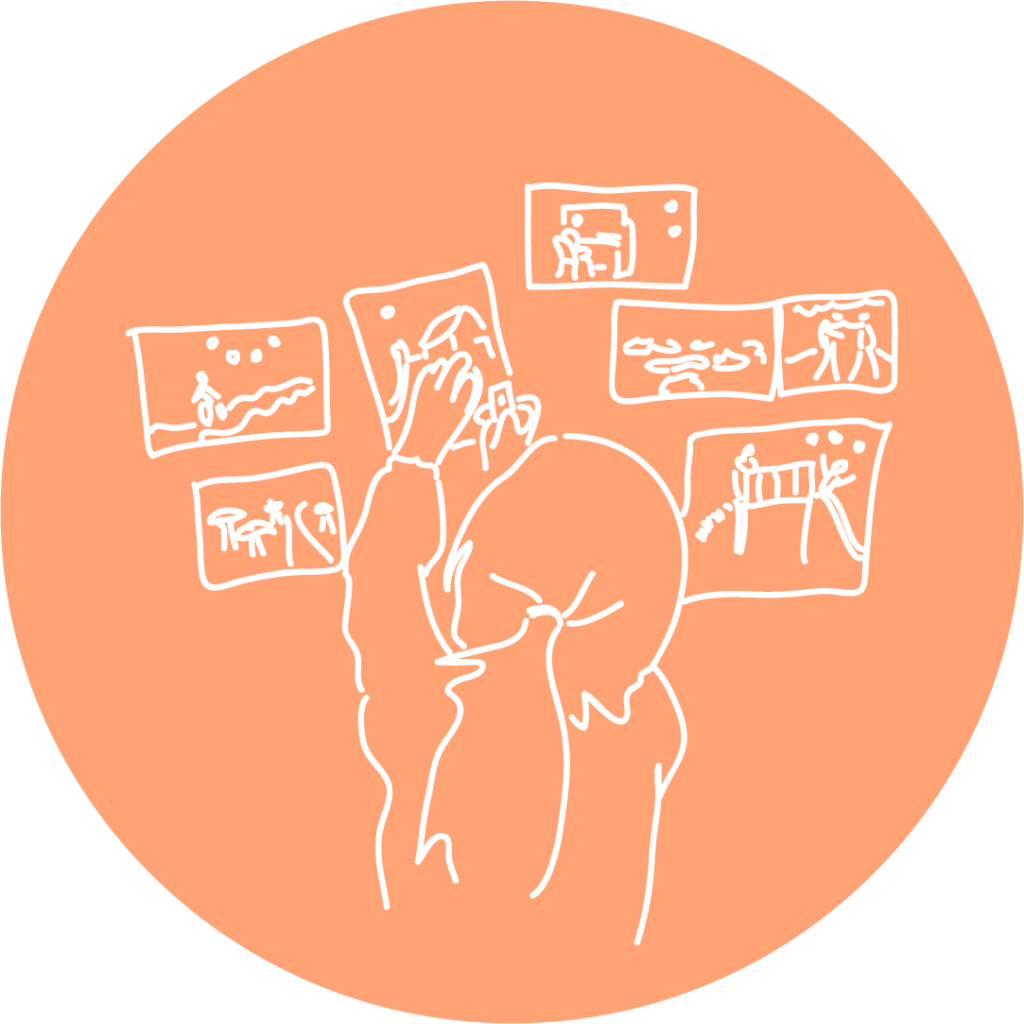Home / INSPIRATIONAL PICKING
Recommended age: 5-18 years
Location: Indoors
Time needed: 1-2 hours in one session
Where in the process: Pre-study
Materials/Tools: Printed inspirational images and colour-coded stickers.
Purpose: To kick-start the imagination and ideas of what is possible, and to get references

To get the creativity going, we sometimes kick things off by showing inspiration in the photos with examples of street designs from around the world as an inspiration.
Each child then gets to vote on which ideas (photos) they liked the most and which one they liked the least, using colour- coded stickers that they put on each photo.
All these photos are a great way for children to realise how much is possible – and also, we get a better understanding of what they like. Choose images based on the project: for example, if you are working on a street, choose images that show inspiration in street environments.
Print out images, for example from Pinterest. Are you going to use the photos more than once? We recommend that you laminate them. You are going to need colour-coded stickers, two to three different colours. We use red, green and sometimes also yellow. Each colour tells you if they like it, hate it or well, it is ok (yellow).
For further preparations, see under each age category under: “How to do it”.
Some sticky-tack is good if you want to put all the photos up on a wall.
Let the inspirational pictures compete against each other!
When we work with young people, we usually use three different colours for the pictures: green-good/great/cool, red-boring/unstimulating/poor and yellow-good but has potential if…
How to:
Remember to take notes of what young people talk about. It can also be helpful to take the pictures with dots so that you can easily go back and be reminded.
If there is widespread competitive thinking in the group and the group really needs more collaborative exercises, then this method risks going the wrong way. In this case, you can choose to let the children put colour-coded stickers on the pictures instead (See how to age 5-7) . You can still let the children talk about why they chose their pictures and how they think they could be inspired by them, but you can remove the actual voting element.
In order to explain why they like a picture or not they have to think about the picture and verbalise their thoughts regarding it to the rest of the group. This will reveal to us listening whether or not there is a thought behind their election and what that thought is.
Pictures that have been thoroughly reflected upon are usually the ones that win.
The method can be used separately in order to find out about children’s design preferences. However, we recommend using it in combination with other methods such as mental maps, physical maps, modelling or iterative sketching process to gain a deeper understanding of children’s preferences.
We use cookies to give you the best experience on our website. If you continue to use this website, you agree to the use of cookies.
Vi använder cookies för att ge dig den bästa upplevelsen på vår hemsida. Om du fortsätter att använda den här webbplatsen godkänner du detta.